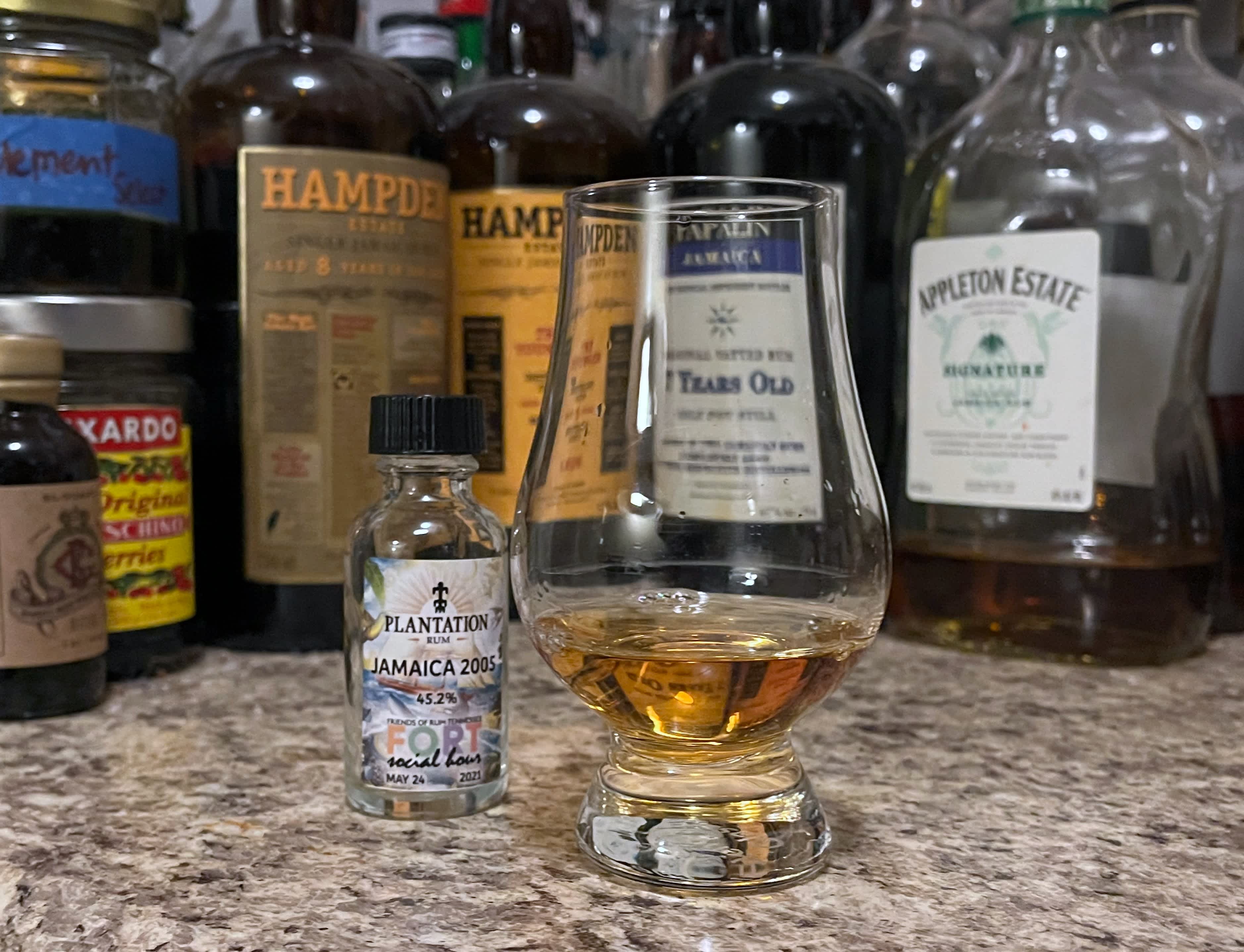Overview
Brand: Plantation
Origin: Long Pond Distillers Ltd., Clark's Town, Trelawny, Jamaica; Clarendon Distillers Ltd., Lionel Town, Clarendon, Jamaica
Still: Pot
Age: 13 years
Finish: ex-Bourbon & ex-Cognac
ABV: 45.2%
The Plantation Rum Vintage Collection is a program from the rum producer geared towards highlighting the terroir of a specific rum producing country, island, and/or distillery. Each year, 6 different expressions are released, featuring blends composed of rums that were distilled in the same calendar year.
Plantation Jamaica 2005 belongs to the 2019 series of vintages, and is unique among the other expressions released that year as it is the only vintage that features a blend of rums from 2 different distilleries: Long Pond and Clarendon.
Those more ingrained into the lore and happenings of rum distilleries and their ownerships may recognize Long Pond and Clarendon as two distilleries partially (Clarendon) or wholly (Long Pond) owned by National Rums of Jamaica (NRJ). NRJ itself has an equally-split, 3-way ownership group, with one third share owned by Maison Ferrand, owner of Plantation, thereby making Long Pond and Clarendon distillates perhaps more accessible/economical for their use.
The constituent rums in this blend are both molasses-based, and were distilled in pot stills in 2005; at Long Pond, this was on their John Dore pot still, whereas at Clarendon, their Vendôme pot still was used.
The rums were then aged 12 years in ex-Bourbon casks at their respective distilleries, before being transferred to France for 1-2 years of aging in casks previously containing Ferrand cognac. According to the product page, no sweeteners were added to this blend, which was bottled at 45.2% ABV and then released in 2019.
Special thanks to Andrew Hinton and Friends of Rum Tennessee (FORT) for providing this sample to me.
Appearance
Amber, high clarity, low viscosity
Nose
Fruit leather, plum, passionfruit, black licorice, savory or "meaty" element
Palate
Rotting fruits (grapes, pineapple, some banana), star anise, cinnamon, lots of heat/drying tannins
Finish
Medium-short, dry, numbing; oak, cinnamon, some hints of apple, pineapple, and grapes
Rating: 3/10
Summary
Given the component rums of this blend, I would expect there to to be a little better control of its proof and flavor. Not so with Jamaica 2005, unfortunately. While I have only limited experience with Clarendon distillates (only Monymusk Special Reserve), I can definitely say that I can taste the Long Pond component… and that's about it. The flavors are fleeting and give way to abrasive, overwhelming alcoholic heat.
The rum is a nice amber color in my glass, with high clarity and low viscosity.
The nose provides fruit leather, plum, and passionfruit notes, as far as the fruit elements go, which are expected in pretty much all Jamaican rums. Long Pond is known for some more savory and/or "meaty" notes in their marques, which do pop up here. Black licorice is the final note that I gather in what actually is a lovely nose.
Jamaica 2005's palate is where things start to go awry. A brief encounter of rotting fruits like grape, pineapple, and banana quickly give way to star anise, before devolving into drying cinnamon and just raw heat/tannic mayhem. I've sampled a different Long Pond single barrel from Plantation, as well as a Holmes Cay ITP release, so I know both LP and Plantation are capable of better-constructive, more flavorful rums, especially at higher proof points than 45.2% ABV. It's a shame, since another multi-Jamaican distillery blend, Papalin Jamaica 7 year, shows how enjoyable such a product like that can be.
The finish is medium-short, dry, and numbing; not many rums, even ones that go so high as 69%-75.5% ABV, tend to numb my senses quite like this one. The only discernable notes I can pick our are oak, cinnamon, and hints of fruits like apple, pineapple, and grapes.
Overall, this blend is poorly constructed, lacking finesse, and barely enjoyable. It has some notes you would expect from the distilleries that created the components of the blend, but really falls short of what either of those distilleries' rums are capable of.
